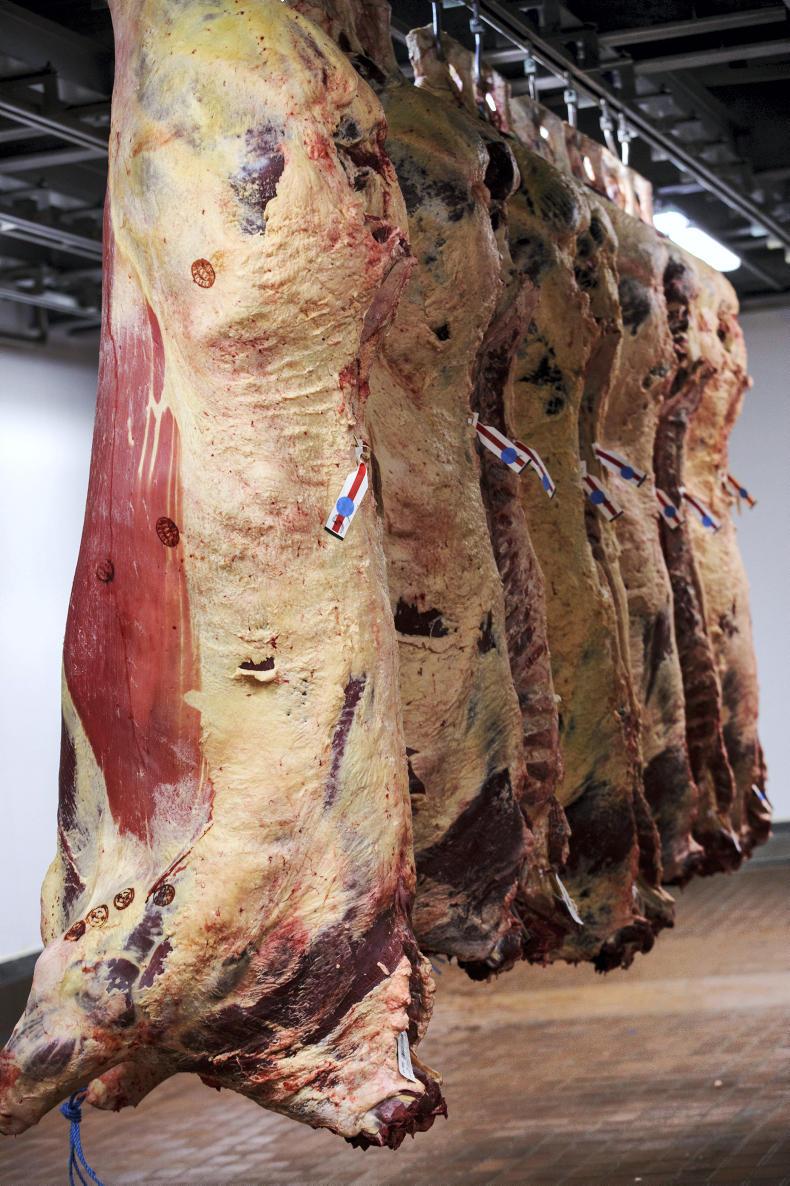It’s been a steady week in the beef trade. While factories have been trying to reduce prices further, they seem to have been unsuccessful in getting prices below €3.60/kg.
Bullocks and heifers are generally trading off a €3.65/kg base, with a little more available to regular sellers and those with numbers.
Some factories have been able to purchase steers at €3.60/kg, but numbers trading at this price are low.
Angus and Hereford stock remain in big demand in all factories.
A bonus of 10c/kg to 15c/kg is available in most factories for suitable stock which hit weight and grade specifications.
Factory agents are also very active in marts sourcing both finished Aberdeen Angus and Hereford animals and nearly finished animals for further feeding.
Young bulls are generally trading at €3.60/kg base on the QPS grid. Older bulls are working off €3.55/kg for R grading bulls and €3.65/kg for U grading bulls.
Poorer-quality bulls are harder to shift, with little appetite out there for them. Some factories are quoting as low as €3.45/kg for O and P grading bulls.
Cows in demand
Cows are still in demand, with quotes for P grading cows coming in at €2.90/kg to €3.00/kg, O grading cows at €3.00/kg to €3.10/kg and R grading cows at €3.15/kg to €3.25/kg depending on numbers and quality.
U grading cows are trading at €3.30/kg and higher if numbers are involved.
Good-quality cows are still a very good trade in marts, with good northern demand for suitable cows.
Plainer cows are back more in mart rings in the last few days reflecting reduced factory quotes, but still commanding a better price than the factory route, especially for those with small numbers.
Last week’s kill stood at 34,378, down 353 cattle on the previous week.
Most of this drop came in the heifer category, with 579 less heifers killed last week compared with the previous week.
There were also a slight drop in cows killed, down 100 head, and an increase in bullocks killed, up 220 head on the previous week.
While there is farmer concern with COVID-19 issues in factories and factory closures, any cut in price due to this would be unjustified by factories given the demand that exists within the trade for beef at the moment.
Most factories are working under capacity, with scope in others to up capacity if needed.
Exports to NI continue to be strong. There was 651 cattle exported to Northern Ireland for direct slaughter last week.
Slaughter-fit cattle are forecast to remain very tight in the North in the next few months, which should see numbers being exported remaining stable for the next few months.
Farmers who slaughtered cattle are reminded to apply for the beef finisher payment, which will pay €100/head on animals slaughtered between 1 February and 12 June 2020. Applications close on 9 September 2020.
Northern Ireland
In Northern Ireland, cattle supplies have increased and processors have cut 6p/kg from quotes, which brings base price back to 360p/kg (€4.21/kg inc VAT) for U-3 grading animals.
However, most farmers offloading cattle have deals already in place at prices agreed last week, which keeps steers and heifers moving off farm from 374p to 380p/kg (€4.33 to €4.45/kg).
Demand for cows has eased and quotes are back 5p to a base of 275p/kg (€3.22/kg) for R3 grading animals.






 This is a subscriber-only article
This is a subscriber-only article










SHARING OPTIONS: